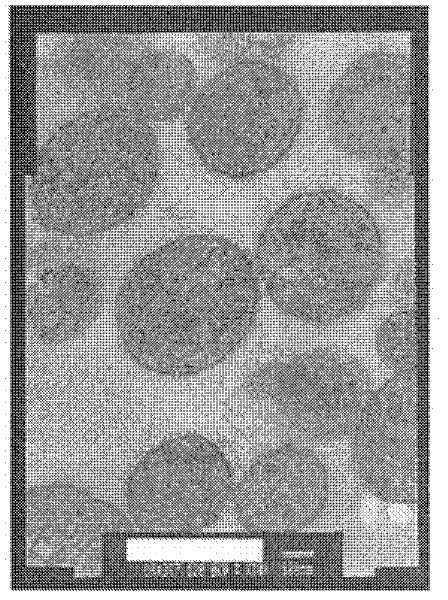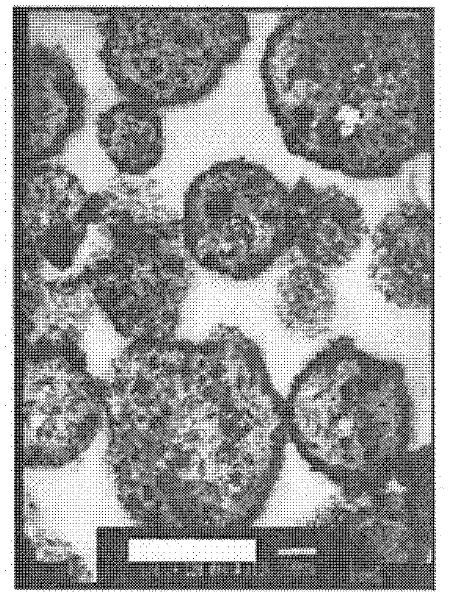Spherical composite particles and manufacturing method therefor
A composite particle and manufacturing method technology, which is applied in the direction of pharmaceutical formulations, cosmetic preparations, dressing preparations, etc., can solve the problems of mixing, difficulty in controlling the inclusion of inorganic particles, and difficulty in manufacturing resin particles, etc., to achieve the effect of improving the process
- Summary
- Abstract
- Description
- Claims
- Application Information
AI Technical Summary
Problems solved by technology
Method used
Image
Examples
Embodiment 1
[0062] 20 parts by weight of polyamide 12 resin (COOH terminal group 123 mmol / kg, SP value 21.7) manufactured by Daicel-Evonik Co., Ltd., powder manufactured by Towa Kasei Kogyo Co., Ltd. as an oligosaccharide A mixture of 65 parts by weight of reduced starch saccharide (trade name "PO-10") and 35 parts by weight of D-sorbitol, and 4 parts by weight of zinc oxide (particle size 0.3 μm, SP value 18.7) treated with stearic acid Parts were melted and kneaded, then extruded into strands (about 3 mm in diameter), and cooled with a belt cooler to produce particles composed of polyamide 12 resin, oligosaccharides, and zinc oxide. Shaped organic solid composition.
[0063] Then, the granular organic solid composition was dissolved in water to make its concentration 5% by weight, and the filter paper of 5A was used to filter under reduced pressure with a Nutsche suction filter, and the washing steps were repeated 10 times, and the water-soluble oligosaccharide was removed from The sph...
Embodiment 2
[0066] In Example 1, 4 parts by weight of titanium oxide (particle size: 0.3 μm, SP value: 18.0) treated with calcium stearate was used instead of zinc oxide, and a twin-screw extruder set at 210° C. was used. An organic solid composition was obtained by the same operation as in Example 1, and spherical composite particles were recovered from the organic solid composition. The center diameter of the obtained spherical composite particles was 1.6 μm. When the spherical composite particles were confirmed with a transmission electron microscope (TEM), it was found that spherical composite particles containing titanium oxide inside the polyamide 12 resin particles were formed. The TEM photograph of gained spherical composite particle is as follows figure 1 shown.
Embodiment 3
[0068] Except that in Example 1, 4 parts by weight of silicon-treated titanium oxide (particle size 0.3 μm, SP value figure 2 shown.
PUM
| Property | Measurement | Unit |
|---|---|---|
| diameter | aaaaa | aaaaa |
| diameter | aaaaa | aaaaa |
| particle diameter | aaaaa | aaaaa |
Abstract
Description
Claims
Application Information
 Login to View More
Login to View More - R&D
- Intellectual Property
- Life Sciences
- Materials
- Tech Scout
- Unparalleled Data Quality
- Higher Quality Content
- 60% Fewer Hallucinations
Browse by: Latest US Patents, China's latest patents, Technical Efficacy Thesaurus, Application Domain, Technology Topic, Popular Technical Reports.
© 2025 PatSnap. All rights reserved.Legal|Privacy policy|Modern Slavery Act Transparency Statement|Sitemap|About US| Contact US: help@patsnap.com



